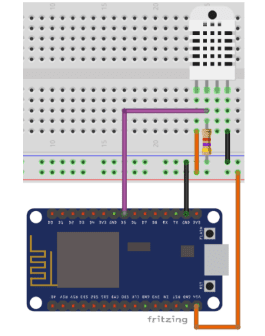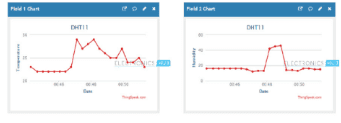Description
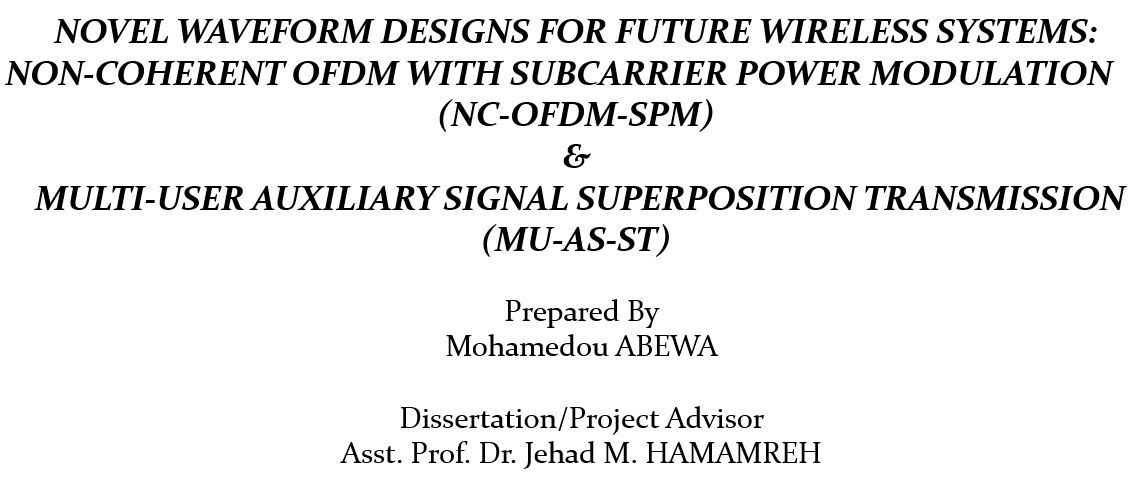
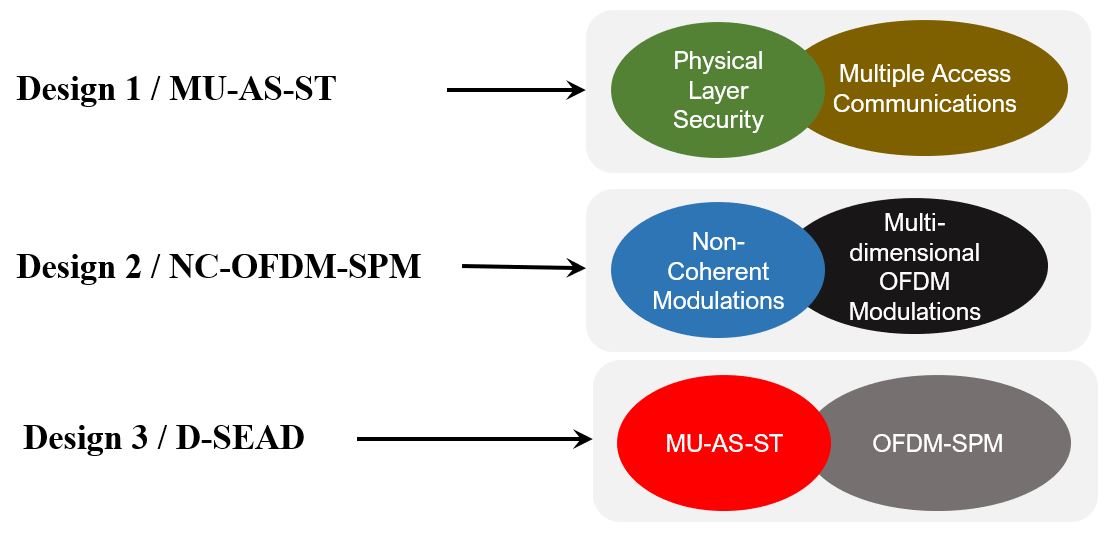
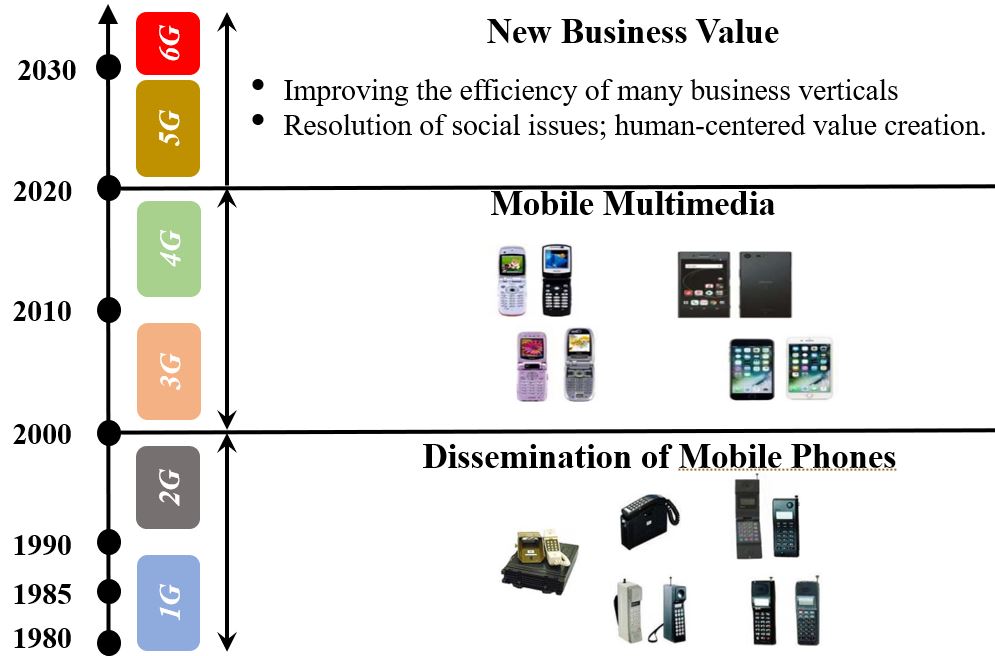
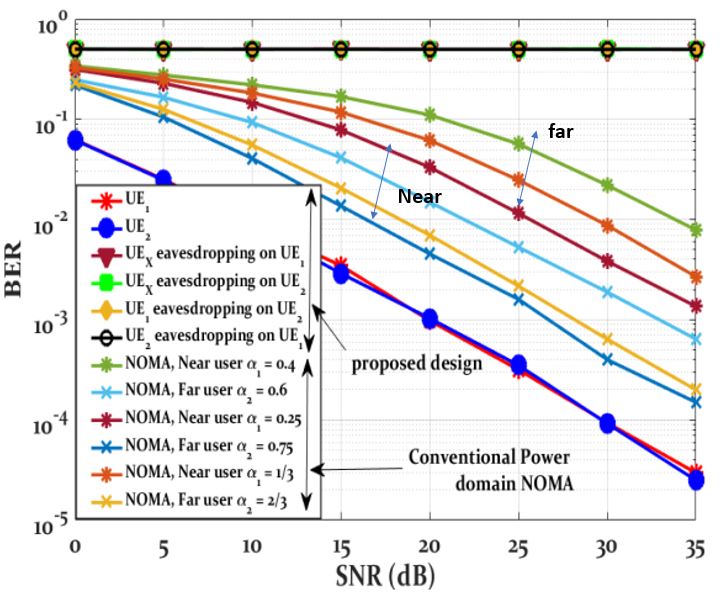
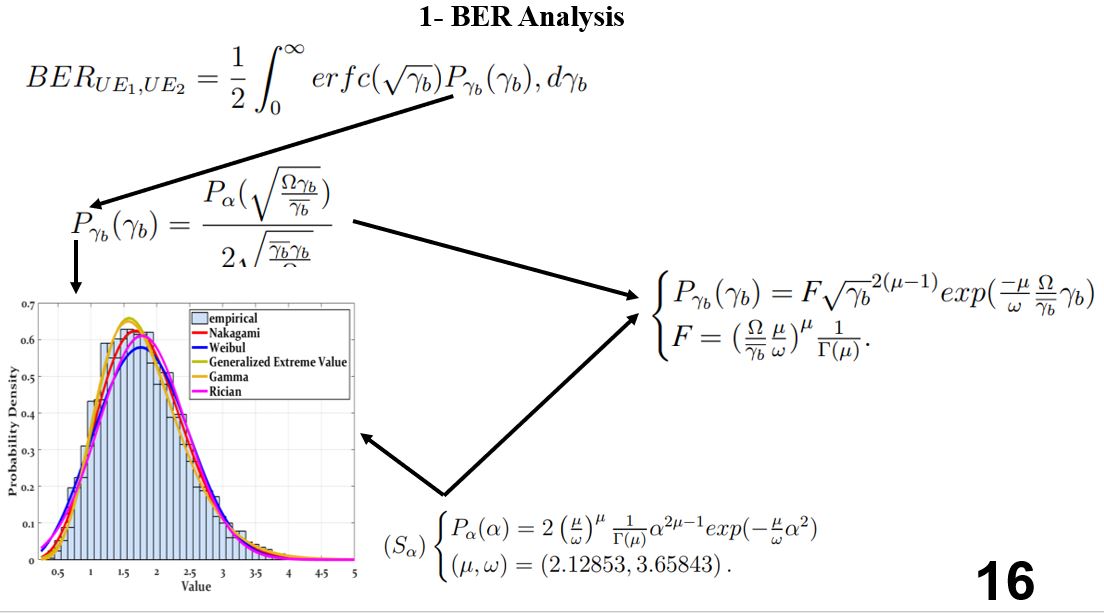
NOVEL WAVEFORM DESIGNS FOR FUTURE WIRELESS SYSTEMS (6G AND BEYOND): NON-COHERENT OFDM WITH SUBCARRIER POWER MODULATION (NC-OFDM-SPM) & MULTI-USER AUXILIARY SIGNAL SUPERPOSITION TRANSMISSION (MU-ASST)
Report Summary:
Future wireless systems are expected to serve very challenging requirements such as enhancing the spectral efficiency and transmission reliability, securing the transmission and guaranteeing low-complexity and low latency communications. In this scope, we investigate and propose in this work some promising research directions for ensuring an effective design for future wireless systems: 1) we study the combination of multi-dimensional OFDM modulations and non-coherent detection for enhancing the spectral efficiency and reducing the complexity in the design of future wireless systems. Particularly, in this regard, we propose and study a new technique termed as ’Non-Coherent Orthogonal Frequency Division Multiplexing with Subcarrier Power Modulation (NC-OFDM-SPM)’ for doubling the spectral efficiency per receiving user/device through the exploration of the power of the subcarriers inside an OFDM block as an additional dimension for conveying extra information. The use of non-coherent detection ensures low-design complexity in this idea. 2) We propose a novel physical layer security design for effective and secure future multiple access communications. The proposed design is called ’Multi-User Auxiliary Signal Superposition Transmission (MU-AS-ST)’ which is presented as an alternative design for the current conventional Power Domain NOMA which was studied by the 3GGP (3rd Generation Partnership Project) from release 13 till 16 under the name ’Multi-User Superposition Transmission (MUST)’ before being eliminated from the study items in release 17. The proposed design superimposes auxiliary signals with the users data for cancelling the inter-user interference fully while achieving perfect secrecy against both internal (presence of an untrusted legitimate user) and external eavesdroppers. MU-AS-ST achieves better reliability than conventional NOMA and does not use Successive Interference Cancellation.
Moreover, this design works for the combination of any two users regardless of their distance from the base station unlike conventional NOMA which works only for the cases where there exists a significant path-loss channel difference between paired (or super-imposed) users. Furthermore, carrying all the processing at the base station makes this design an appealing choice for processing-restricted communication devices such as IoT devices. 3) We study the integration of multi-dimensional OFDM modulation formats in multiple access setups for enhancing the spectral efficiency per area and per device for a more optimal usage of the spectrum allocated for wireless communications. As an example of this integration, we study the combination of OFDM-SPM with MU-AS-ST where we show that this leads to doubling the spectral efficiency per area and per device. The proposed designs were studied thoroughly and their performance was evaluated in terms of different performance metrics such as bit error rate, spectral efficiency, design complexity and peak to average power ratio (PAPR).
Keywords: auxiliary signals, eavesdropping, IoT, low-complexity, multi-dimensional OFDM, multiple access, non-coherent detection, physical layer security, power domain NOMA, reliability, spectral efficiency, subcarrier power modulation, wireless communications.
================== Report Contents ==================
1 Introduction 1
1.1 Motivation . . . . . . . . . . . . . . . . . . . . . . . . . . . . . . . . 1
1.2 Scope & Contributions . . . . . . . . . . . . . . . . . . . . . . . . . 2
2 Non-Coherent OFDM with Subcarrier Power Modulation (NC-OFDMSPM)
2.1 Introduction . . . . . . . . . . . . . . . . . . . . . . . . . . . . . . . 4
2.1.1 Direction 1 / Multi-dimensional OFDM Modulations . . . . . 4
2.1.2 Direction 2 / Non-Coherent Modulation Formats . . . . . . . . 6
2.1.3 Non-Coherent OFDM-SPM (NC-OFDM-SPM) . . . . . . . . 6
2.2 System Model and Preliminaries . . . . . . . . . . . . . . . . . . . . 8
2.2.1 Transceiver Design . . . . . . . . . . . . . . . . . . . . . . . 8
2.3 Performance Analysis . . . . . . . . . . . . . . . . . . . . . . . . . . 10
2.3.1 Non-Coherence of NC-OFDM-SPM . . . . . . . . . . . . . . 10
2.3.2 BER Analysis . . . . . . . . . . . . . . . . . . . . . . . . . . 11
2.3.3 Power Policies . . . . . . . . . . . . . . . . . . . . . . . . . . 13
2.3.4 Spectral Efficiency . . . . . . . . . . . . . . . . . . . . . . . 15
2.3.5 Peak to Average Power Ratio (PAPR) . . . . . . . . . . . . . 15
2.4 Simulation Results . . . . . . . . . . . . . . . . . . . . . . . . . . . 16
2.4.1 Power Saving Policy (PSP) . . . . . . . . . . . . . . . . . . . 16
2.4.2 Power Reassignment Policy (PRP) . . . . . . . . . . . . . . . 17
2.5 Conclusion . . . . . . . . . . . . . . . . . . . . . . . . . . . . . . . 21
3 Multi-User Auxiliary Signal Superposition Transmission (MU-AS-ST)
3.1 Introduction . . . . . . . . . . . . . . . . . . . . . . . . . . . . . . . 23
3.1.1 Overview of Power Domain Non-Orthogonal Multiple Access
(PD-NOMA) . . . . . . . . . . . . . . . . . . . . . . . . . . 23
3.1.2 MU-AS-ST as an alternative for PD-NOMA . . . . . . . . . . 24
3.2 System Model and Preliminaries . . . . . . . . . . . . . . . . . . . . 26
3.2.1 Transmitter Design . . . . . . . . . . . . . . . . . . . . . . . 26
3.2.2 Channel Model . . . . . . . . . . . . . . . . . . . . . . . . . 26
3.2.3 Receiver Design . . . . . . . . . . . . . . . . . . . . . . . . . 27
3.2.4 Design of the Auxiliary Signals . . . . . . . . . . . . . . . . . 29
3.3 Conventional PD-NOMA . . . . . . . . . . . . . . . . . . . . . . . . 30
3.4 Performance Analysis . . . . . . . . . . . . . . . . . . . . . . . . . . 31
3.4.1 BER Analysis . . . . . . . . . . . . . . . . . . . . . . . . . . 31
3.4.2 Secrecy Analysis . . . . . . . . . . . . . . . . . . . . . . . . 33
3.4.3 Security Against Internal Eavesdropping . . . . . . . . . . . . 33
3.4.4 Security Against External Eavesdropping . . . . . . . . . . . 33
3.4.5 SINR Analysis: MU-AS-ST vs PD-NOMA . . . . . . . . . . 34
3.4.6 Computational & Design Complexity Analysis . . . . . . . . 34
3.5 Simulation Results . . . . . . . . . . . . . . . . . . . . . . . . . . . 35
3.5.1 BER . . . . . . . . . . . . . . . . . . . . . . . . . . . . . . . 35
3.5.2 Throughput . . . . . . . . . . . . . . . . . . . . . . . . . . . 36
3.5.3 PAPR . . . . . . . . . . . . . . . . . . . . . . . . . . . . . . 36
3.6 Conclusion . . . . . . . . . . . . . . . . . . . . . . . . . . . . . . . 36
4 Enhancing the Spectral Efficiency per Area and per Device through Multi-
Access Multi-dimensional OFDM Modulations
4.1 Introduction . . . . . . . . . . . . . . . . . . . . . . . . . . . . . . . 39
4.2 Proposed System Model . . . . . . . . . . . . . . . . . . . . . . . . 40
4.2.1 Transmitter Design . . . . . . . . . . . . . . . . . . . . . . . 40
4.2.2 Receiver Design . . . . . . . . . . . . . . . . . . . . . . . . . 41
4.3 Results & Discussion . . . . . . . . . . . . . . . . . . . . . . . . . . 42
4.3.1 BER Analysis . . . . . . . . . . . . . . . . . . . . . . . . . . 42
4.3.2 Spectral Efficiency . . . . . . . . . . . . . . . . . . . . . . . 43
4.3.3 PAPR . . . . . . . . . . . . . . . . . . . . . . . . . . . . . . 44
4.3.4 Complexity Analysis . . . . . . . . . . . . . . . . . . . . . . 44
4.4 Conclusion . . . . . . . . . . . . . . . . . . . . . . . . . . . . . . . 45
A Constellation diagram: NC-OFDM-SPM vs 4-PAM 46
B Error floor problem: A discussion on the logic of combining subcarrier
power modulation & differential detection. 47
C A note on the derivation of the BER expression of MU-AS-ST 49
D A short discussion on security 50
================== Intro. ==================
Chapter 1
Introduction
1.1 Motivation
Approximately, in every decade a new generation of wireless systems is being
developed to address a set of communication requirements of that decade.
Particularly, this era is characterized with the rise of the internet of things
(IoT) where billions of devices which are equipped with sensing,
communication and control capabilities are being interconnected. Moreover,
with the massive spread in mobile devices and the emergence of new
applications (e.g., extended reality, haptics, mission critical applications,
etc.), future networks (i.e., B5G/6G) should introduce novel transmission
designs which are able to cope with this reality.
In the following, we discuss some important communication requirements in
the light of the present and future wireless communication developments.
• Spectral efficiency (i.e., Capacity): This requirement is very crucial in the
current era. For serving a massive interconnection of data-hungry devices, we
are in front of a very challenging task due to the scarcity of the spectrum
allocated for wireless communications; the so called the spectrum shortage
problem.
Possible solutions to this problem is by licensing new part of the spectrum (i.e.,
millimeter wave / mm-wave) or developing novel transmission designs which
are very efficient in using the available amount of licensed wireless spectrum.
(i.e., doing more with less).
• Wireless Security: Due to the broadcast nature of electromagnetic signals used
in wireless communications, the transmitted signals are prone to eavesdropping
/ hacking activities. As such, securing the data embedded in these signals is
a must. This is further gaining importance in this era of digitalization where
the scope of sensitive information is expanding including sensitive messages,
phone/video calls, financial transactions, sharing secure documents … etc. Securing
these data is a very crucial requirement which must be addressed by future
wireless systems.
• Transmission Reliability: This is particularly important in sensitive application
scenarios where ultra-reliability is a main requirement such as in the case of autonomous
driving / vehicle-to-everything (V2X), remote diagnosis and surgery
/ augmented reality (AR)-assisted surgery, etc.
• Complexity & Latency: This is an era of speed and as such future systems are expected
to take this aspect into account by developing techniques of low-latency
characteristics. Another crucial concern which is significantly linked with latency
is the design complexity where reducing the complexity of the design ensures
lower latency timing.
Developing schemes with low-complexity and low-latency is particularly important
in the case of processing-restricted devices which are limited by their
battery life.
• Power Consumption: It is very crucial that the developed techniques take into
account the requirement of low power consumption especially if the developed
designs are for low-power applications such as IoT applications.
The design challenges and requirements mentioned above, motivate and drive the development
of novel transmission techniques for meeting the demands of future wireless
systems.
1.2 Scope & Contributions
In this scope, this work proposes new designs for addressing the challenging requirements
of future wireless systems by exploring many powerful and promising research
directions such as the use of non-coherent designs for reducing the complexity and the
latency of the communication, the use of multi-dimensional Orthogonal Frequency
Division Multiplexing (OFDM) modulation formats and multiple access inspired designs
for enhancing the spectral efficiency and reliability, and the use of Physical Layer Security
(PLS) for a secure wireless data transmission.
This thesis proposes three novel techniques for future wireless communication systems.
The main ideas involved in the design of the proposed techniques can be summarized
as follows:
1. Design 1 / NC-OFDM-SPM : Non-Coherent OFDM with Subcarrier Power Modulation
(NC-OFDM-SPM) is proposed as a novel non-coherent OFDM modulation
technique where the power of the subcarriers inside an OFDM block is
explored as an additional dimension for carrying extra information. This results
in a technique featured with low-complexity due to the use of non-coherent detection,
doubling the spectral efficiency per device compared to conventional
OFDM where data is conveyed only through the classical constellation symbols
(PSK or QAM), and the flexibility regarding the use of the transmit power where
different power scenarios are formulated including power saving policy where,
compared to conventional OFDM formats, some of the power can be saved to
match the requirements of low power applications and the power reassignment
policy where the saved power is reassigned to the transmit subcarriers to enhance
the transmission reliability.
2. Design 2 / MU-AS-ST : This design proposes a novel and secure multiple access
alternative for power domain NOMA. The proposed design makes use of auxiliary
signal superposition where channel-dependent auxiliary signals are added
on top of the multiplexed users’ signals, which are transmitted from different antenna
sources in such a way that the transmission is secure against both external
and internal (legitimate untrusted users) eavesdroppers. Moreover, it achieves a
very good transmission reliability and low-complexity at the receiver by carrying
all the complex processing tasks at the base station.
3. Design 3 / D-SEAD: Doubling the Spectral Efficiency per Area and per Device
(D-SEAD) is a new technique proposed for a more efficient and secure usage of
the wireless spectrum allocated for wireless systems. This design proposes the
integration of multi-dimensional OFDM modulation formats in multiple access
setups as a means of enhancing the spectral efficiency per area and per device.
In particular, MU-AS-ST (i.e., Design 2) was modulated through a technique
called OFDM with Subcarrier Power Modulation and Binary Phase Shift Keying
(OFDM-SPM-BPSK) as an example of this general integration. Note that this
modulation scheme is the coherent version of NC-OFDM-SPM. The integration
of this modulation format in a multiple access setup yields doubling the spectral
efficiency per area and per receiving device/user.
The capability of the proposed designs in addressing the challenges and requirements
of future systems was studied through extensive computer simulations and mathematical
derivations. The developed system models are explained in detail
and are compared to state-of-the-art techniques in the literature.
